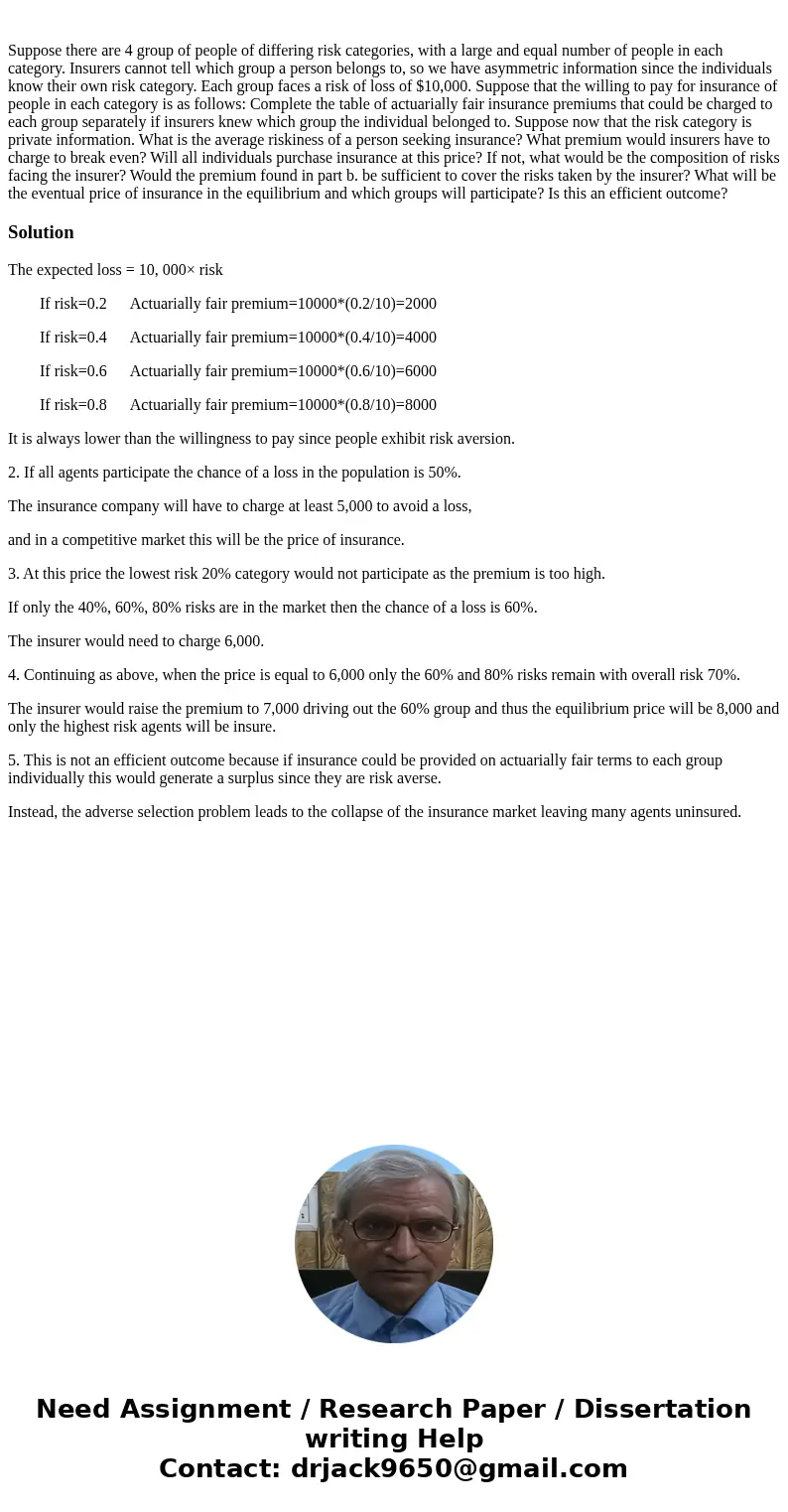Suppose there are 4 group of people of differing risk catego
Solution
The expected loss = 10, 000× risk
If risk=0.2 Actuarially fair premium=10000*(0.2/10)=2000
If risk=0.4 Actuarially fair premium=10000*(0.4/10)=4000
If risk=0.6 Actuarially fair premium=10000*(0.6/10)=6000
If risk=0.8 Actuarially fair premium=10000*(0.8/10)=8000
It is always lower than the willingness to pay since people exhibit risk aversion.
2. If all agents participate the chance of a loss in the population is 50%.
The insurance company will have to charge at least 5,000 to avoid a loss,
and in a competitive market this will be the price of insurance.
3. At this price the lowest risk 20% category would not participate as the premium is too high.
If only the 40%, 60%, 80% risks are in the market then the chance of a loss is 60%.
The insurer would need to charge 6,000.
4. Continuing as above, when the price is equal to 6,000 only the 60% and 80% risks remain with overall risk 70%.
The insurer would raise the premium to 7,000 driving out the 60% group and thus the equilibrium price will be 8,000 and only the highest risk agents will be insure.
5. This is not an efficient outcome because if insurance could be provided on actuarially fair terms to each group individually this would generate a surplus since they are risk averse.
Instead, the adverse selection problem leads to the collapse of the insurance market leaving many agents uninsured.

 Homework Sourse
Homework Sourse